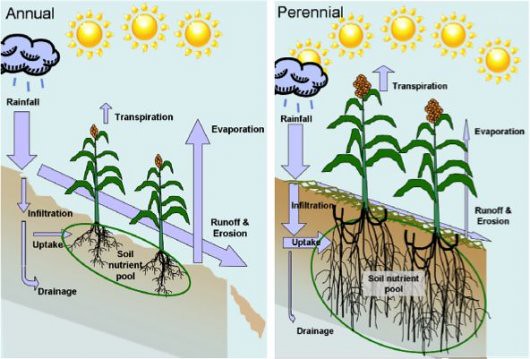Entrevista concedida pela FUNVERDE para a revista HM! sobre as malditas sacolas plásticas de uso…
Perennial grains could be biggest agricultural innovation in eons

It has pretty much become a given that grain crops, such as wheat and barley, need to be started from scratch every spring. This means farmers must buy seeds, use seeding equipment to get those seeds into the soil, then apply a lot of fertilizer and hope for weather conditions that won’t be too hot, cold, wet or dry for germination. There are such things as perennial grains, however – plants that, like the grass in your lawn, simply pick up in the spring where they left off in the fall. While perennial versions of common annual grains have seen little in the way of development, a new research paper says it’s about time they did. The advantages of cultivating perennial grains, the paper’s authors submit, could be one of the biggest advances in the 10,000-year history of agriculture.
The paper, “Increased Food and Ecosystem Security via Perennial Grains,” points out that perennials have longer growing seasons and longer, denser roots than annuals. Those longer roots, which can reach down 10 to 12 feet, allow the crops to reach and hold more water and nutrients, reduce erosion, and condition the soil. Because the plants grow for a greater length of time, they also sequester more carbon from the atmosphere.
Annual crops, by contrast, are said to lose five times as much water as perennials, and 35 times as much nitrate – a plant nutrient that regularly leaches out of fields and pollutes waterways. Needless to say, annual crops also involve the rearing, transportation, purchase and sowing of seeds every year, which leaves definite carbon, chemical and financial footprints.
So, when might we start seeing perennial versions of annual grains? Perhaps within two decades, according to the researchers, although maybe sooner if more resources are invested in their development. “It really depends on the breakthroughs,” said Washington State University soil scientist John Reganold, a lead author of the paper. “The more people involved in this, the more it cuts down the time.”
Published in the latest issue of Science, the paper was a collaborative effort of over 24 authors, most of those plant breeders or geneticists.
Fonte – Gizmag de 29 de junho de 2010




Este Post tem 0 Comentários